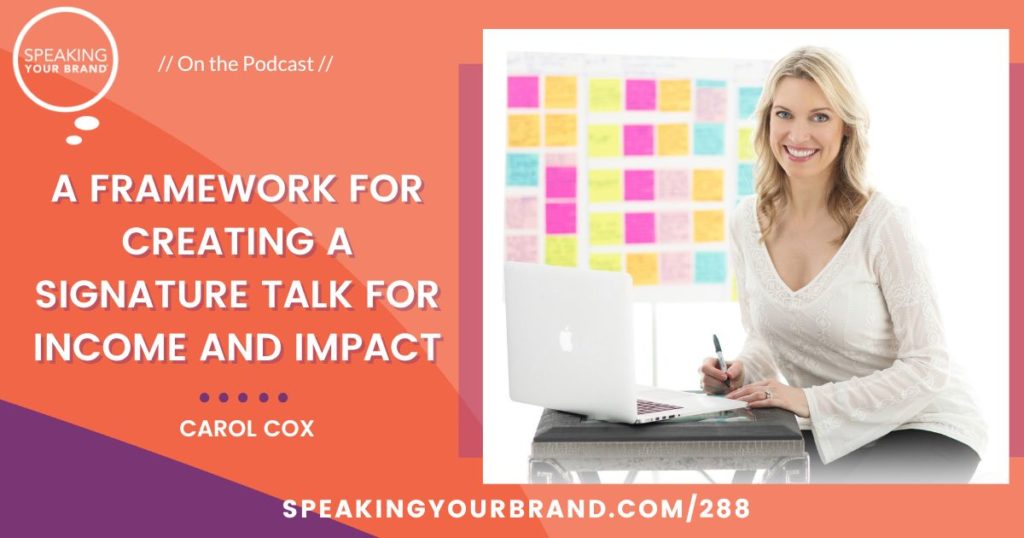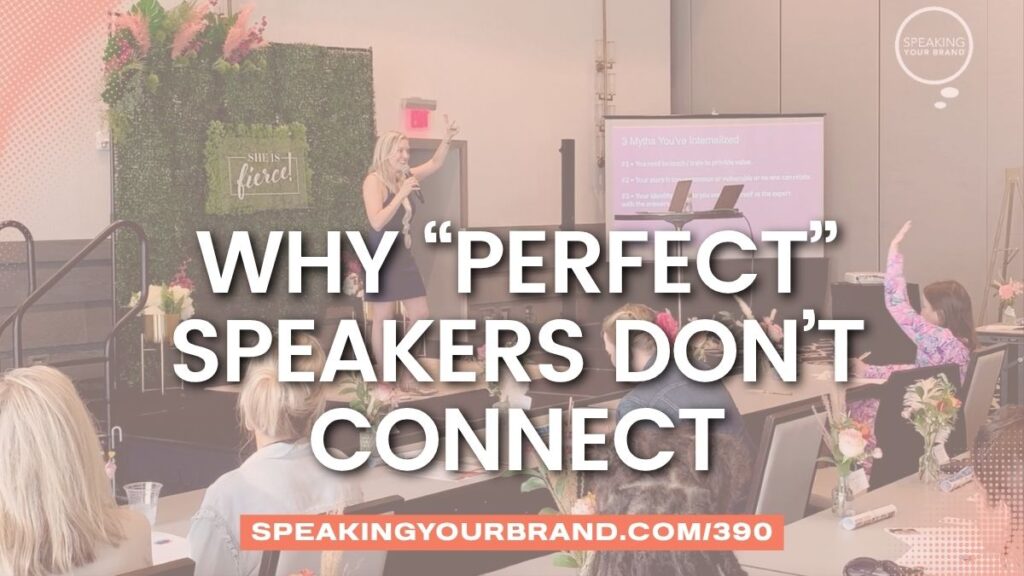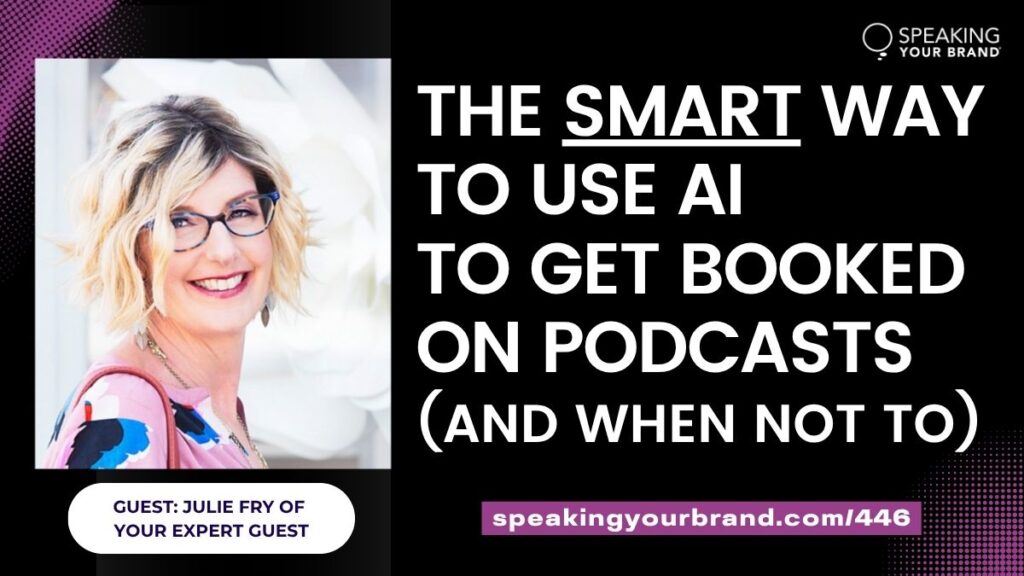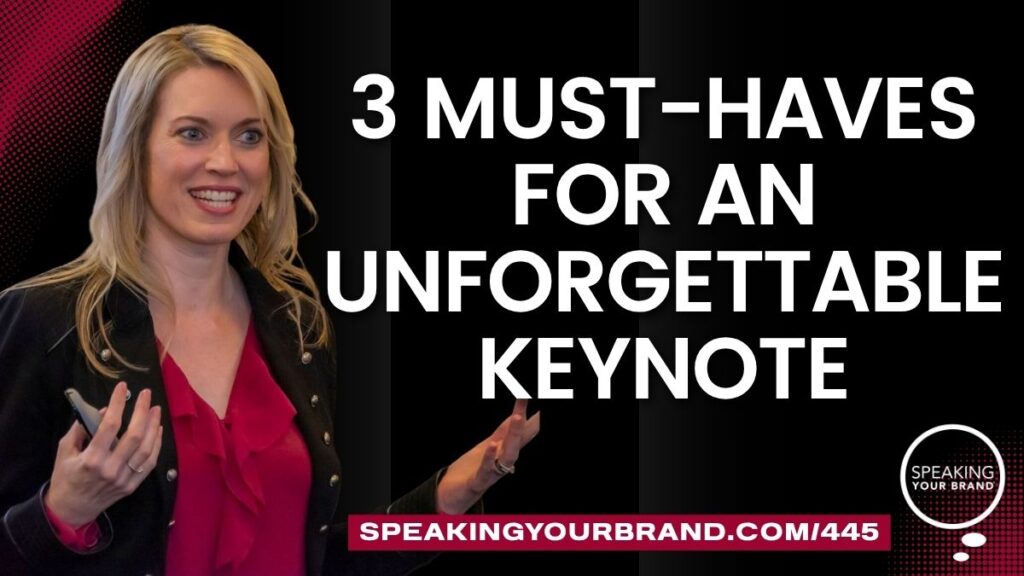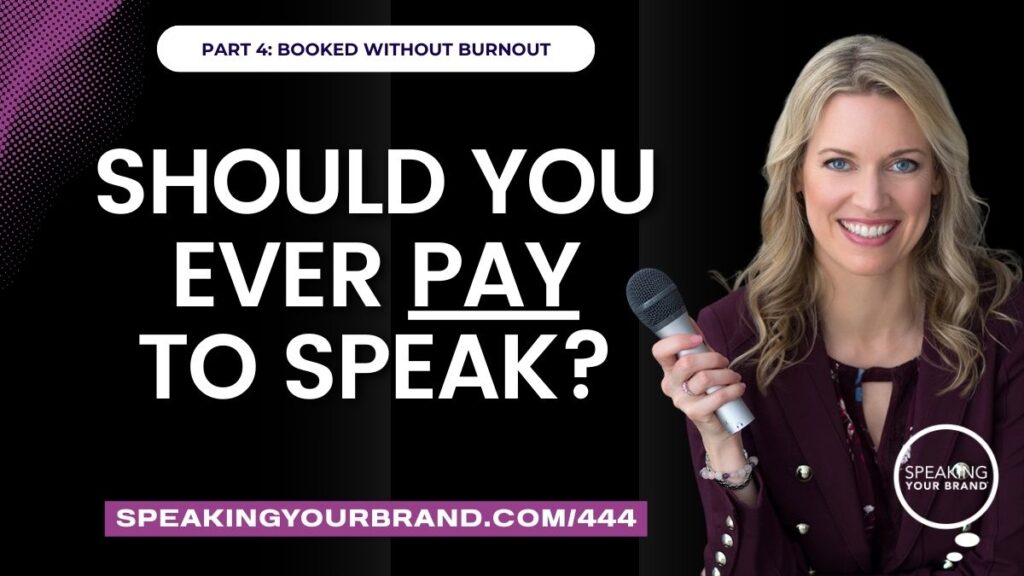288-SYB-Framework-3.mp3: this mp3 audio file was automatically transcribed by Sonix with the best speech-to-text algorithms. This transcript may contain errors.
Carol Cox:
I’m sharing with you today our signature talk canvas framework so you can create more impactful and effective presentations on this episode of the Speaking Your Brand podcast. More and more women are making an impact by starting businesses running for office and speaking up for what matters. With my background as a TV political analyst, entrepreneur and speaker. I interview and coach purpose driven women to shape their brands, grow their companies and become recognized as influencers in their field. This is Speaking Your Brand, your place to learn how to persuasively communicate your message to your audience. Hi there and welcome to the Speaking Your Brand podcast. I’m your host, Carol Cox. Have you ever sat down to create a presentation? Neither. Just stare at a document or a slide deck and wondered, how should I start this? What are the points that I want to make sure I include? How can I make sure that I’m not putting too much into an overwhelming the audience? Or perhaps you have presentations that you’ve delivered and they’ve been good, but you know that they could be better, that maybe you are putting in too much content or the content is a little bit dry. You want to put more of yourself into it, you want to put more of a personal story into it, but you’re not sure how to do that. Or maybe you’ve been speaking for lead generation and for sales and you just haven’t been getting the ROI that you’ve been hoping to.
Carol Cox:
This is why it’s really helpful not to wing it when it comes to putting together your presentations or to keep doing the same thing you’ve been doing without making any adjustments. We have a framework called the Signature Talk Canvas that I created about five years ago. After working with many clients and realizing that there was a pattern to the work that I was doing with them. Here is Speaking Your Brand. Of course, we’ve done lots of presentations over the years, lots of lead generation and brand awareness talks, and those talks have generated tens of thousands of dollars by probably go back and add it up. I’m sure it’s it’s over $100,000. And we’ve worked with hundreds of women entrepreneurs over the years using this framework that I’m going to share with you today, including successful TEDx and keynote speakers and women entrepreneurs who have also generated tens of thousands of dollars from their signature talks. One of the organizers for TEDx called me one of the best speaking coaches he’s worked with because of the work that I did with those TEDx speakers. And it’s not because it was a one hit wonder, it was because of this framework that I’m going to share with you is the consistency that the framework provides that lends its power. So before I go into describing the signature talk canvas framework, let me first back up and talk about what exactly is a signature talk.
Carol Cox:
So here’s how I define a signature talk. Your signature talk reflects what you want to be known for your area of expertise and the insights you want to share with your audience. It also includes your beliefs and your values and what you do or believe that’s different or that others aren’t seeing about your industry or about your your topic area as well as the way you work. So your methodology, your process, your approach, your own framework that you may have within your business, ultimately, it’s about who you are, who you help, what they need, how you help them, and why it matters. So all of those things come together to create a signature talk. And the idea behind a signature talk is that you have this really powerful foundation for your presentations. Of course, you can adjust aspects of the presentations for different audiences, different lengths of time, different formats. But you’re not recreating a presentation every single time and say you have this basis that you can then pull from. And not only can you pull from it for presentations, whether they’re virtual or in person, but you can also pull from it for website copy for email, newsletters, for social media copy for video series. There are so many different ways you can take the content of your signature talk and repurpose it. Here’s what I see happens a lot, and this happens to me as well as to the clients that we work with, is that you have lots of ideas, lots of different types of content that you can include in your talk and you’re not sure what is the best idea or what is the best content to include.
Carol Cox:
And so I liken this to an oak tree. Oak trees are big and beautiful and they have branches upon branches upon branches, so they have a trunk, but then they have really thick branches and then those branches of other branches and then leaves and so on. So your ideas are like all of those branches of the oak tree. They just go on and on and on and on, which is fantastic. You can use those ideas for lots of different things, but when it comes to your signature talk, say a 30 or 45 minute or a 60 minute talk, imagine if you were giving those that oak tree of ideas to your audience. They would feel overwhelmed. And not only would they end up feeling overwhelmed, but they’re less likely to then take your call to action. So work with you because they’re confused. Instead, I want you to think of your signature talk as a palm tree. A palm tree has one. Really thick trunk. That’s it. And it has some branches at the top. But unlike at Oak Tree, it’s not branch upon branch upon branch. Instead, it’s a few palm fronds, so a few branches. And those branches are your ideas, your stories, your example, your content.
Carol Cox:
But that trunk of the palm tree is what’s called your through line, and everything in your talk should hang off of that through line. That’s what’s going to make it really powerful. As I mentioned earlier, our framework is called the signature talk canvas and it is trademark. Just like the phrase speaking, your brand is trademark. So signature talk canvas is trademarked. And the reason why I called it a canvas is because years ago I had studied and worked with other canvases that are very popular in the startup space. They’re called the business model canvas, the value proposition canvas and so on. And so I wanted to take this idea of a canvas, which is literally one sheet. So like, say one piece of paper that shows everything at a glance. With the business model canvas, there are nine building blocks and it shows you your you map out your business model on this one sheet of paper. Well, the signature tore canvas is the same thing. Instead of using one nine and a half by 11 sheet of paper, though, we use a large poster board because we need a map out everything in your talk with those post-it notes and the idea behind the signature talk canvas that I created also comes from filmmaking and storytelling. In cinema, if you ever have seen storyboards where where filmmakers were storyboard out the entire movie or TV show, all the characters, all the plot points, all the different things that are going, the action scenes, all that’s going to go on.
Carol Cox:
And they would use index cards and then kind of put the index cards on a wall and move things around. So that’s where the idea of the Post-it notes on the poster board came from was to be able to easily move things around as we need to rearrange content. So this is why having a framework in this case a signature talk canvas framework is so important. It’s a repeatable process. So this is something that we use with all of our clients. It’s proven. We’ve proven it time and time again for ourselves and with our clients how effective it is. You don’t have to start from a blank document wondering What am I going to put in my talk? It really does clarify your message so much. We hear this time and again after we work with clients in our the VIP day to create their talk is that they get so much clarity because they had all these ideas swirling around in their head and they didn’t know which ones to pull from. So that’s literally what happens is that all their ideas come onto this canvas and as I mentioned before, provides this foundation that you now have for your talk that you can adjust as needed. You can get a copy of the framework to see what it looks like by downloading our Free Thought Leadership Workbook.
Carol Cox:
You can get that at Speaking Your Brand guide again. That’s Speaking Your Brand guide. So the signature talk canvas framework is laid out in three acts. So it’s based on classic three acts, story structure. So narrative storytelling arc and the hero’s journey is what it was, is based on. But I also added sales and marketing techniques embedded into it, because so much of what you do with your signature talk is for lead generation and for brand building, for business building. So imagine the canvas or the poster board, divide it into three columns. So the first column is act one. The second column, which is a little bit bigger, is Act two, and then the third column is Act three. So kind of like swim lanes. If you ever seen Sprint or Agile marketing, they use these swim lanes. So these three columns, Act one act to Act three. So just like classic three story structure, it’s the beginning, middle end. You can also think of it in storytelling as you’re setting up the situation and act one. Act two is the action and Act three is the resolution. In this case, for more of a lead generation talk, you’re thinking of Act One as setting up. The problem that the audience has at two. Is the process or your solution for that problem. And then Act three. Is that reward or worth? What are the benefits that we’re going to get? So that’s the resolution piece.
Carol Cox:
So once you’ve laid out the three acts, then you may wonder, okay, well, what do I do here? And here’s the thing that may seem counterintuitive, but we actually start at the end. So you may think, well, I’m going to start what am I going to do for the very first title slide of my talk, or what am I going to do for the very first opening sentence for my talk? And we’ll get back there. But instead, I want you to start at the end. I want you to think about what is the call to action you want to leave your audience with? The call to action could be something related to working with you, purchasing your product, your service, your program and so on. It could be some type of free offer. So an email, opt in, a lead, Madden and so on. If you’re working on more of a keynote talk, you still want to have a call to action for the audience. Now the call to action is not going to be something that you’re selling. Instead, it’s going to be something that you want the audience to do. So based on what they just heard from you, what they learned from. You what? They are inspired by you. What do you want them to go do? So that’s the call to action. And I want you to start there. I want you to define very clearly, define what that call to action is for the audience.
Carol Cox:
Now, if this is a lead generation talk, then I want you to decide on the one offer that you want to present to the audience in your business. You may have many things that you sell that you offer, but for every talk that you give, I want you to focus on one thing, one offer to present to them. You can change that from presentation or presentation, but only one offer per presentation, because otherwise you’re going to confuse your audience. And then we know that a confused mind does not buy analysis. Paralysis sets in. So one offer, one call to action start there. And that’s going to be kind of in the towards the bottom of Act three. So you’re going to close kind of with a little bit of an inspirational motivational closing, ideally one that ties back to your opening. So your call to action is going to be somewhere in the middle of Act Three. Now that you know where your call to action is, it’s time to ask, what does your audience need to know to get there? If you want them to buy something from you, what is your audience need to know to get them excited? Interested that this thing from you is the solution to the problem that they’re facing. Or if it’s a keynote and your call to action is something that you want them to go out and do, either for themselves or for the larger society.
Carol Cox:
What is your audience need to know in order to inspire them for that call to action? That’s now with the main premise and the main content of your talk is going to be. So now we can go back to Act one and act one is where you’re setting up the situation. The problem that the audience faces in Act One is going to include this type of content, and it doesn’t necessarily have to be in this strict order. Think of this more as a guideline. And then the order of these pieces that I’m going to share with you now are going to adjust just depending on your own, your own speaking style, the size of the audience, the format of the audience, your own content and so on. But here’s what you’re doing in Act One. You’re affirming with the audience that you know the goal that they have related to your topic. So the audience wants something there. They’re sitting there listening to you. They want something in their life, their business, their health, their relationships. Whatever your topic is, they have a goal. Then they have the obstacles that are getting in the way to them achieving that goal. These are the obstacles that they see are in the way. And usually these obstacles are the superficial obstacles. So if you think of an iceberg, the iceberg above the water, above the surface of the water, are the obstacles that the audience can see for themselves.
Carol Cox:
You as the expert, you see, though, that there’s a real problem underneath the surface that they don’t necessarily recognize. And this is why it’s up to you to point out what this real problem is, because then your solution is what solves this real problem for the audience. So you’re to describe that real problem and then your credibility, your bio, your background is then baked into how you’ve identified this real problem that the audience is facing. So that’s what happens in Act One. And here’s what I don’t want you to do at the beginning of your presentations, and I’m sure you’ve seen this when you go to conferences and if you’ve done this, that’s okay. Just switch it up for next time. So the very first title slides comes on, the speaker gets up and they introduce themselves and then they talk all about their background. So where they went to college and the businesses that they’ve started and what they’re doing now and what their business does and all these logos on their slide and and the audience doesn’t care. The audience has not bought in yet. Instead, they want to know what’s in it for me. I’m sitting here. What are you going to help me with? That’s why you set up the audience goal, the obstacles and the real problem, and then your credibility is baked into that. So that’s what you’re doing in Act One.
Carol Cox:
Now, on Act Two, you’re going to solve that real problem that you just showed them in Act one. And Act two is where you present your own framework, your big idea, your approach, your process to solving that problem. Generally, you want between 1 to 3 key points. You don’t want to overwhelm your audience with too much content. So stick between 1 to 3 key points. If you have a framework that is, say, in alliteration or an acronym or maybe a visual framework, and I’ve done episodes on frameworks. Episode 145 Diane Diaz, our lead speaking coach, and I talked all about frameworks and different examples, so go back and listen to that one. Episode 145 If you have a framework that, say, has more than three letters in it or three steps in it, then what you can do with your audience is just give them a broad, brief overview of the framework. So the five letters or six letters or steps or whatever it happens to be, and then just focus on or dive deep on two or three of them in the actual content of your presentation, since you probably won’t have. Time to go into all of it. So in act two, you’re having your key points. You explained how the audience can get past this real problem to the goal that they want. You’re going to provide them examples. Client You can have client examples, your own stories related to this.
Carol Cox:
You can have audience questions, audience activities for them to do, whether it’s writing something down, reflective questions, talking to someone next to them in the chat, if it’s virtual. You also are showcasing your thought leadership here with an act to within your content. So what’s your angle? What’s your perspective on your topic and on your industry? You can also share some case studies in here as well. So that’s Act two. So that’s really the biggest part of your presentation content is Act two, then an Act three. Now you’re starting to wrap up. So based on what the audience just learned in Act Two with the solution to their real problem, what’s their reward? What are the next steps that they can do? So next steps that they can do on their own. And then what are the next steps they can take with you? That’s where your call to action comes in. And then I like to leave the audience with that inspirational motivational message at the end that is possible for you to do this. We need you to do this. And these the rewards is the benefits that you can expect by doing so. So that’s the framework, the ACT one, Act two three framework. Now as you’re going along on the canvas, so if you get a poster board and you get posted notes to help kind of write things down and move things along around, it acts one, two and three.
Carol Cox:
You want to provide a balance of information, stories and audience engagement. We actually use four different colors of Post-it notes. So we have orange, pink, blue and yellow, and we use those four colors because we want to make sure that as we’re writing on the Post-it notes that we have a balance or just for audience engagement. Pink is for stories, blue is for supporting points. So kind of the supporting content and the yellow is for those key points just so they stand out really brightly on the board. So we make sure we have a balance of especially balance of audience engagement and stories as we’re going along. The beauty of the signature talk canvas framework is that once you have the main content on there and the three acts, you can then expand and contract based on the length of time that you need. Generally, when we fill out an entire canvas, it ends up being about a 35 to 45 minute talk, just based on how many Post-it notes are on there. But then you can expand it to a two hour workshop or a four hour workshop by just adding a little bit more content, add more audience activities in there. You can also contract it. So maybe it’s a 45 minute talk, but there that particular event’s giving you 25 minutes. Then you can just take out a couple of examples. Or maybe if you had three key points, whittle it down to two key points.
Carol Cox:
This framework works whether you’re presenting virtually or in person, whether you’re doing a lead generation talk or say a longer workshop or a brand building talk, whatever type of talk that you’re doing, just know the goal going in. That’s why you start with the end, the call to action in mind, the offer in mind, and then you can adjust your angle and your emphasis as needed. The beauty of our signature talk canvas framework is that it works for any topic and any industry. The women that we work with really run the gamut. We have physicians, pharmacists, scientists, engineers, supply chain professionals, productivity consultants, leadership coaches, photographers, dieticians, interior designers, business coaches, marketing consultants. So it really doesn’t matter what your topic is or what your industry is. The signature talk canvas framework will work for you. If you want to hear examples from some of our clients and how they’re using their signature talk, here are some episodes to go back and listen to. I’ve also included these in the show notes. We had Cindy Rowe on the podcast back just a few weeks ago in episode 286. She talked about how when her signature talk, she was able to connect a lot of her different ideas into one message. Last year we had Shantel Wilkinson on an episode 236 where we talked about how she has one personal story, but that she can use that story for with different angles for different audiences in her signature talk.
Carol Cox:
Then also last year, Episode 243, we had two clients on KC Graham were on air in Austin and they talked about the process of working on their signature talk in a VIP day with us and how they’re using it. You can certainly take what I described to you here, as well as downloading that Thought Leadership Workbook and work on your signature talk yourself. But we also know that it’s so powerful to do this together, it truly accelerates your progress. Which is why when you go through the Thought Leader Academy, you get a VIP day to create your signature talk. Using our framework, we hear time and time again from clients that the process is magical and that they are so pleasantly surprised to see all of their ideas and stories mapped out in this way. And as we. Tell them it’s all your content. We just know the questions to ask so they can get it on the board and get it in the right structure and the right flow so that it has the most impact on your audience. If you would like to join us in the Thought Leader Academy, you can get all the details and submit your application at Speaking Your Brand academy. Again, that’s Speaking Your Brand academy. So now that you have your signature talk in next week’s episode, I’m going to talk about how to increase your speaker fees until next time. Thanks for listening.
Sonix has many features that you’d love including enterprise-grade admin tools, upload many different filetypes, collaboration tools, share transcripts, and easily transcribe your Zoom meetings. Try Sonix for free today.

